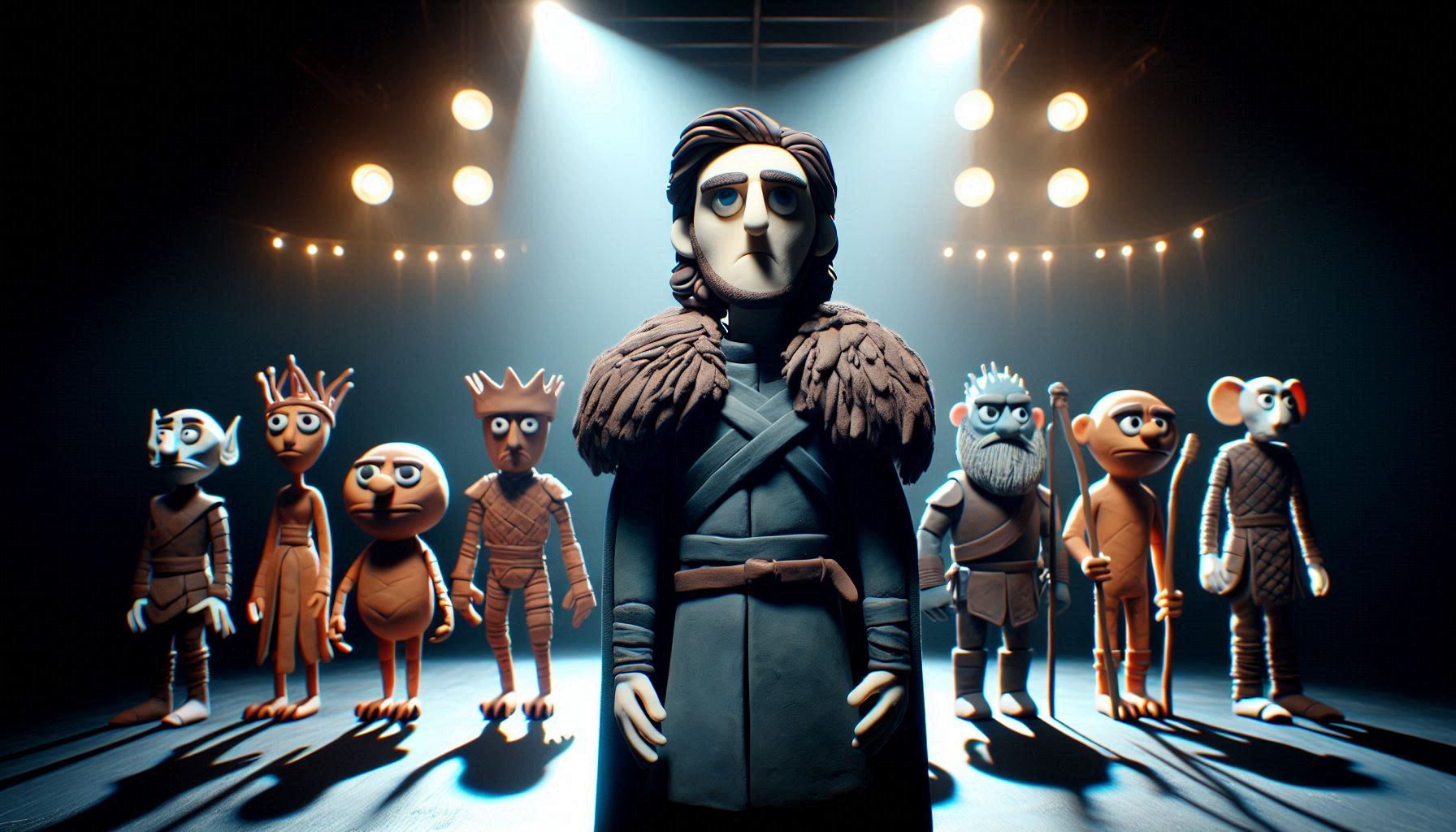When writing a novel, our goal is usually to create round characters, which can be a challenging task. One helpful approach to developing better characters is to use a character profile template and tools like Story Planner to plot your novel.
However, regardless of how well we plan our characters, we ultimately have to face the crucial moment: Describing them within the text. Our characters aren’t just what we imagine or plan in our character profiles, but also what we depict in the story and reveal to the readers.
In this post, we’ll discuss some essential questions about effectively describing our characters and some examples of impactful character descriptions.
How long should a character description be?
There is no single answer to this question. It depends on the writer and their style. Some writers extend their descriptions for paragraphs, and others are so concise that they don’t even barely describe. Even the same writer can change the type and length of their descriptions from one work to another. Not all stories need the same style.
But let’s apply the conventions: Writing, like any other discipline, has its rules. To create a work like Guernica, Picasso had to learn to draw still lifes first. So look at how long a description should be from that point of view: What do we know that works? What do the rules tell us? Do we have to explain everything? Every detail? Or is it better to let the reader imagine it for themselves?
It’s not easy to make very long character descriptions that work. Nowadays, if a book has a multi-page description, most readers skip that part or, even worse, close the book. Readers want to see the story in their heads, but they also want action and movement. The more concise and exact the descriptions are, the better.
🎯 Pro Tip: If your character has many details to describe, divide them into short descriptions and distribute them throughout the text, looking for the exact moment for each one. That is when they contribute something to the plot. The reader will feel interested and will not want to skip a word.
What aspects should I describe about a character?
Fortunately, you don’t have to describe every detail of a character’s appearance to effectively portray them. Instead, focus on unique details that reveal something about the character, such as a scar, unusual hair color, or a distinctive facial expression. Your goal is to tell a story, so use your words for that purpose.
Yet, sometimes what is relevant about a character is that they don’t have relevant traits. Their normality is what stands out in the story. They’re ordinary people, like so many others:
“The boy was wearing those low-rise jeans that showed his underwear. The T-shirt, two sizes larger than his scrawny teenage body needed, carried a message I didn’t understand then. I wanted to look at his face, but he was half hidden behind his long, black, straight bangs. He was another of many. Those kids seemed so similar to each other that even if I had met him five minutes later, I wouldn’t have been able to recognize him”.
🎓 Learn more: How Create the Perfect Character Profile Template
How to organize a character description?
Any description in a novel, not just a character description, should be something methodical and orderly. If you describe a character starting with an overview, then going into detail about their feet, then talking about their hat, then going back to an overview and finally describing their knees, you may end up making the reader dizzy.
Think carefully about the traits you want to highlight and arrange them in a logical way. For example, starting with the most general and then going into the details, or taking a panoramic look from top to bottom. But it’s best to always use the action itself so that it guides the description.
How to find the perfect moment for a character description?
Short answer: When it matters.
It’s a common mistake for writers to hastily introduce descriptions into their stories. This isn’t just an issue for new writers. You can also find this mistake in published novels. Often, as soon as a character appears, the writer describes them, although the description disrupts the flow of the story. But if you want your story to flow naturally, try to integrate descriptions seamlessly within the action.
🎯 Pro Tip: Don’t forget that you are telling a story. Always. Even when you describe a character or a scene. So stop wondering when and start asking yourself: Does it matter? Is this description telling a story?
I’m tired of reading novels with a character that gets up and looks into the mirror to describe themselves: “My green eyes stared back at me. I had long black hair and a few freckles on my nose”. I know what the character is like, but the description doesn’t give me anything else. In fact, it takes me out of the story because I assume the character knows what she looks like. She doesn’t need to describe herself when she looks in the mirror.
It would be much better to say it like this: “I was running late for the date, but I could not resist checking my reflection in every window I passed. Was my ponytail the right choice, or should I have left my hair down? I finally stopped in front of a furniture store with a mirror by its door. Suddenly, I did not feel as confident in my red dress, and I could not recall what Sarah had told me about him. Would he like my long, dark hair? Would he find my freckles endearing, like my mom always said, or would he see me as ridiculous as I felt at that moment”?
With this description, the reader can see the character, but they also get something else: A context, a story.
How to describe a character through the eyes of another one?
Another effective answer for the best time in a story to describe a character might be when another character is looking at them. The gaze of others provides an opportunity to reveal to the reader what we want them to see.


For instance, when Mary and Charles meet at the movie theater’s entrance, it’s Charles’s first date, and he’s feeling nervous, especially when he notices how beautiful Mary is. This is a suitable moment to describe her.
We can also use this opportunity to describe two characters at once through comparison. Charles is amazed at Mary’s beauty — her long black hair in a ponytail, her cute freckles on her tiny nose… In contrast, he feels inadequate with his greasy hair, wrinkled clothes, and thick glasses. And this is how readers see both characters in a single paragraph.
How to get the most out of a character description?
Once again, the same point is being reiterated: You’re telling a story, even in the character description.
Don’t turn the description into a simple listing of their physical characteristics. Use it to define the characters and to tell us something relevant about them.
As an example, let’s contrast two descriptions. The first is a straightforward list of physical features:
“Sarah was tall and thin. She had long brown hair and brown eyes. She was wearing a light blue shirt, jeans, and white sneakers”.
The second description goes a little further and gives us a glimpse of Sarah’s character:
“Sarah stood out among her friends because she was the tallest and thinnest of them. Her long brown hair was meticulously styled as if she had been brushing it for hours. That’s how she was, always elegant, always impeccable, even on regular days like that, when she was wearing nothing but simple jeans, a striped T-shirt, and some surprisingly white sneakers”.
Which one do you think is more impressive?
How can I write better character descriptions?
Those are my tips for writing better character descriptions. But don’t forget that what will help you the most to write great character descriptions is writing and reading them. After all, practice makes perfect, right? So let’s learn from the best.
I’ve selected a few of my favorite descriptions from established authors. I hope you like them as much as I do and recognize the points we have discussed above in them. Happy reading!
Character descriptions examples
📚 The Old Man and the Sea, by Ernest Hemingway «The old man was thin and gaunt with deep wrinkles in the back of his neck. The brown blotches of the benevolent skin cancer the sun brings from its reflection on the tropic sea were on his cheeks. The blotches ran well down the sides of his face and his hands and the deep-creased scars from handling heavy fish on the cords. But none of these scars were fresh. They were as old as erosions in a fishless desert. Everything about him was old except his eyes and they were the same color as the sea and were cheerful and undefeated».
📚 The Prince’s Act, by Amélie Nothomb «From his identification card, I learned his name was Olaf Sildur, and he was of Swedish nationality. Dark and plump, he did not correspond to the idea I had of a Scandinavian. He had spoken French without a hint of an accent. He was born in Stockholm in 1967, the same year as me. He looked older, no doubt because of his corpulence. I couldn’t read his profession, written in Swedish. In the photograph, he seemed as stupid to me as he was at that moment, in his cadaverous stupefaction: a vocation».
📚 Dracula, by Bram Stoker «Whilst he was speaking the horses began to neigh and snort and plunge wildly, so that the driver had to hold them up. Then, amongst a chorus of screams from the peasants and a universal crossing of themselves, a caleche, with four horses, drove up behind us, overtook us, and drew up beside the coach. I could see from the flash of our lamps as the rays fell on them, that the horses were coal-black and splendid animals. They were driven by a tall man, with a long brown beard and a great black hat, which seemed to hide his face from us. I could only see the gleam of a pair of very bright eyes,which seemed red in the lamplight, as he turned to us».
📚 Timbuktu, by Paul Auster «Once Bea Swanson entered the room, there were so many other things to think about, so many words to follow and feelings to digest, that he could scarcely remember his own name, let alone Willy’s half-cocked scheme for salvaging his literary archive. Her hair had turned white, and she had put on thirty pounds, but the moment he saw her the fly knew who it was. Physically speaking, there was nothing to set her apart from a million other women her age. Dressed in blue-and-yellow madras shorts, a billowing white blouse, and a pair of leather sandals, she seemed to have stopped thinking about her appearance a long time ago. The plumpness of her arms and legs had grown even more pronounced over the years, and with the dimples in her pudgy knees and the varicose veins bulging from her calves and the flesh sagging from her upper arms, you could easily have mistaken her for a retirement-community golf lady, someone with nothing better to do than roam the back nine in an electric cart and worry about whether she was going to putt out in time for the early-bird special. But this woman’s skin was white, not tanned, and instead of sunglasses she had on a pair of no-nonsense wire-rimmed specs. Furthermore, once you looked through the lenses of those drugstore glasses, you discovered eyes of the most remarkable shade of blue. Look into those eyes, and you were trapped. They held you with their warmth and vivacity, their intelligence and watchfulness, the depth of their Scandinavian silences. These were the eyes that Willy had fallen in love with as a boy, and now the fly understood what all the fuss had been about. Forget the short-cropped hair and the chubby legs and the humdrum clothes. Mrs. Swanson was no dowager schoolmarm. She was the goddess of wisdom, and once you fell in love with her, you loved her until the day you died».
📚 Crime and Punishment, by Fiódor Dostoyevski «After a while the door opened the merest slit: through it the occupant was scrutinizing the newcomer with evident suspicion, and all that could be seen of her in the darkness was her smal, glittering eyes. Observing all the people on the landing, however, she took courage and opened the door the whole way. The young man stepped over the threshold into a dark hallway divided by a partition, behind which there was a tiny kitchen. The old woman stoond in front of him, looking at him questioningly. She was a tiny, dried-up little old woman of about sixty, with sharp, hostile eyes, a smal, sharp nose and no headcovering. Her whitish hair, which had not much grey in it, was abundantly smeared with oil. Wound round her long, thin neck, which resembled the leg of a chicken, was an old flannel rag of some description, and from her shoulders, the heat notwithstanding, hung an utterly yellowed and motheaten fur jacket. The young man must have glazed at her in some special way, for her eyes suddenly flickered again with their erstwhile suspicion».
